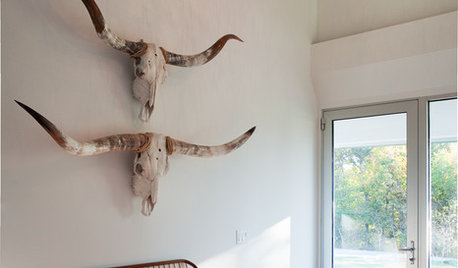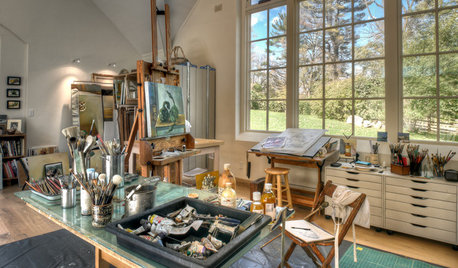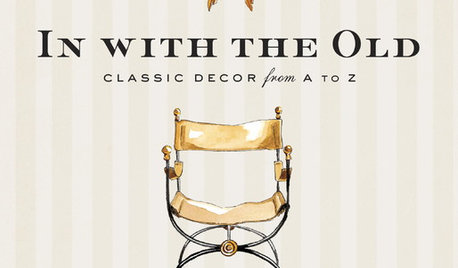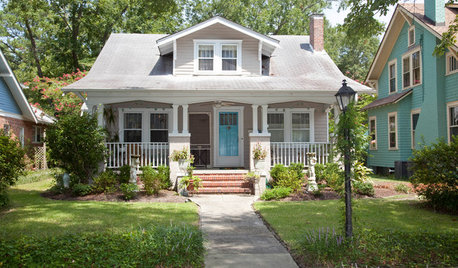Reference
Tony Jefferies - ff
24 years ago
Related Stories

DECORATING GUIDESEasy Reference: Standard Heights for 10 Household Details
How high are typical counters, tables, shelves, lights and more? Find out at a glance here
Full Story
DECORATING STYLESModern Southwestern Style Wrangles Fall Flair
Break from the outdated, seasonally inappropriate herd with harvest colors and rich references, and nary a hide in sight
Full Story
EVENTSImagination Rules at the 2014 San Francisco Decorator Showcase
Inventiveness and personal references abound in a historic show house benefiting a high school
Full Story
FARMHOUSESLight-Filled Artist’s Studio in the Pennsylvania Countryside
An architect creates a soaring space for a still-life painter that references the area’s history and her passion for horses
Full Story
TASTEMAKERSClassic Decor Gets Its Due — in a Giftworthy Book
Entertainment and education mingle in this design reference, brimming with anecdotes, history and design lessons for today
Full Story
ARCHITECTURECity View: Phoenix Style Blooms in the Desert
Designers are leaving literal desert references in the dust, now favoring ubercontemporary styles along with Spanish colonial revival
Full Story
TRANSITIONAL HOMESHouzz Tour: A Happy-Trails Home on a California Field
Horse-loving homeowners look to barns and equestrian references for their light and bright new build
Full Story
ARCHITECTURERoots of Style: Origins and Interpretations of the Bungalow
Bungalows translate effortlessly across continents and cultures to adapt comfortably to many styles and regions
Full Story
ARCHITECTUREMust-Know Modern Homes: The Glass House
Little privacy, much inventiveness. Philip Johnson’s 1949 see-through structure offers a clear view of his eclecticism
Full Story
LANDSCAPE DESIGNGarden Design Essentials: Proportion and Scale
Tiny features in an expansive landscape miss the mark. Here's how to make sure your garden elements relate properly
Full Story





Barb Mich z5
Tony Jefferies - ffOriginal Author
Related Professionals
Norwood Landscape Contractors · Cary Landscape Contractors · Columbine Landscape Contractors · Edinburg Landscape Contractors · Marlborough Landscape Contractors · Mission Bend Landscape Contractors · Oak Harbor Landscape Contractors · York Landscape Contractors · Fort Lee Fence Contractors · Palm Harbor Fence Contractors · Pasadena Fence Contractors · Sandy Fence Contractors · Selden Fence Contractors · West Columbia Fence Contractors · Whittier Fence ContractorsBarb Mich z5
viktoria - 4
Susi Torre-Bueno - 9
claire - wales u.k.
Kathleen - Ont zone 5
michelle derviss - ca
Judy
David L Green
poinciana
freezengirl - 3 USA
ceresone mo.
fiberspinner
anniew
magickiwi
magickiwi
trudi_d
ceresone
ginny12
pinetree30